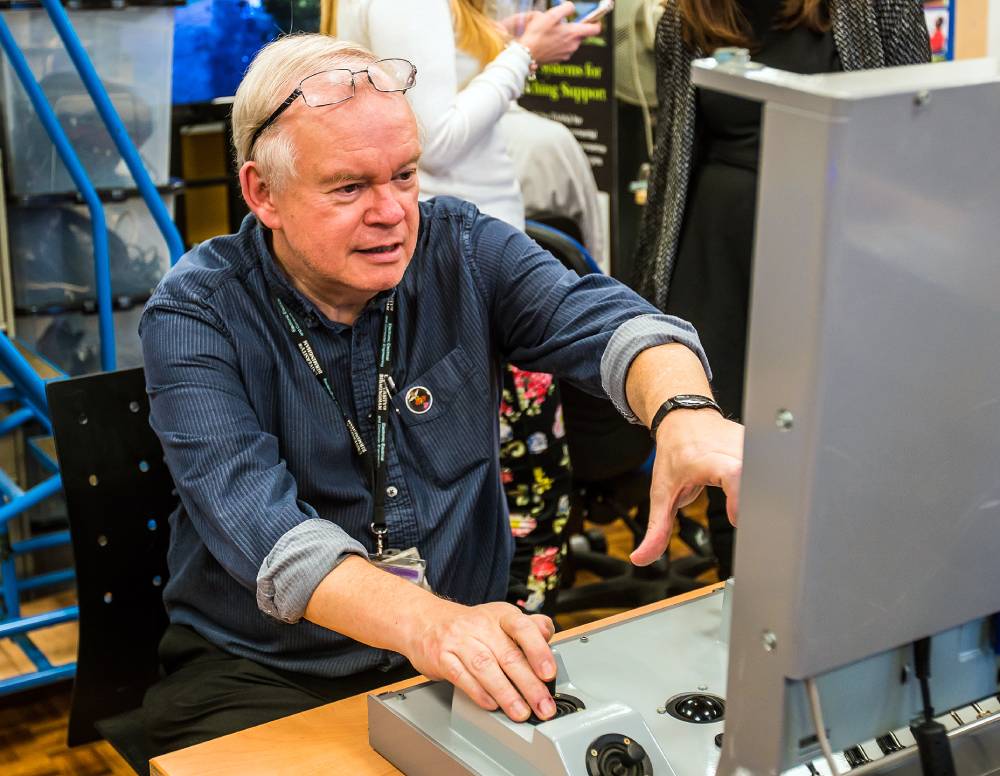“Nothing we’re experiencing today is actually new”
March 28, 2022
Professor Bob Stone, Emeritus Professor in XR (Extended Realities) and Human-Centred Design and Director of the Human Interface Technologies Team at the University of Birmingham, writes that many of the interfaces claiming to be part of the metaverse are actually far from it, and are unlikely to revolutionise the way we work any time soon.
Writing a short opinion piece on the subject of “The Metaverse” is incredibly difficult. Not in terms of trying to use a limited number of words to express an informed opinion, but actually trying to write about something that does not yet exist! Having read just some of the huge number of (over-hyped) Metaverse articles that have appeared over the past year, it has become very clear that many of the self-proclaimed experts and “pioneers” in this arena are themselves unable to provide succinct definitions of what the Metaverse is.
Nor can they provide convincing examples or verifiable use cases that would, under normal circumstances, inspire business communities to invest significant sums of money in the hope of a decent return on investment in the near future. But investing they most certainly are! Spurred on by reports of developments by the “big names” – Meta, Google, Apple, Microsoft, even Disney – there is a current pandemic of virtual space acquisitions and start-up investments of 1990s dotcom proportions.
Writing for the Centre for the New Midlands recently, I described the Metaverse “market” as a confused, frenetic and highly risky stage show on an international scale, with no clear indicators of what may happen next. Having played a role in the development of the Virtual Reality (VR) community since 1987, I have to say that nothing we’re experiencing today is actually new. In fact, many of the hardware and software products (including shared virtual worlds) and services we see online have little to do with “the Metaverse”. That is, if we believe that the Metaverse will be a pervasive, connected global 3D phenomenon, changing the way we work, how we meet, how we learn, how we share concepts, how we design and share prototypes and other corporate knowledge, and so on.
What we’re actually seeing is a multitude of disconnected products and shared, small online 3D environments that have been evolving for many years in the VR sector, all now labelled as “Metaverse”, as that’s what their developers think will get them noticed. Even Virtual and Augmented Reality headsets are being touted as must-have interfaces to the Metaverse (which, as the history of VR and AR shows us, is simply not the case).
For now, I will be watching how this crazy phenomenon develops. I may even get involved in one or two meaningful or unique Metaverse ventures, especially if they offer a means of delivering unique educational experiences for future “cyber generations”, environments free from personal data capture, surveillance techniques or abuse, and can demonstrate verifiable impacts on the real world – a world from which we can’t escape, but can influence together. But, for now I will resist the hype and most definitely continue with Zoom and Teams meetings, where I can still screen-share my videos, presentations, even real-time VR demos. Most importantly though, where I will not be surrounded by frenetic, disembodied, cartoon-like and soulless, potentially untrustworthy characters or digital fakes, but can still see, hear and (in the main) trust those real humans with whom I’m interacting.

